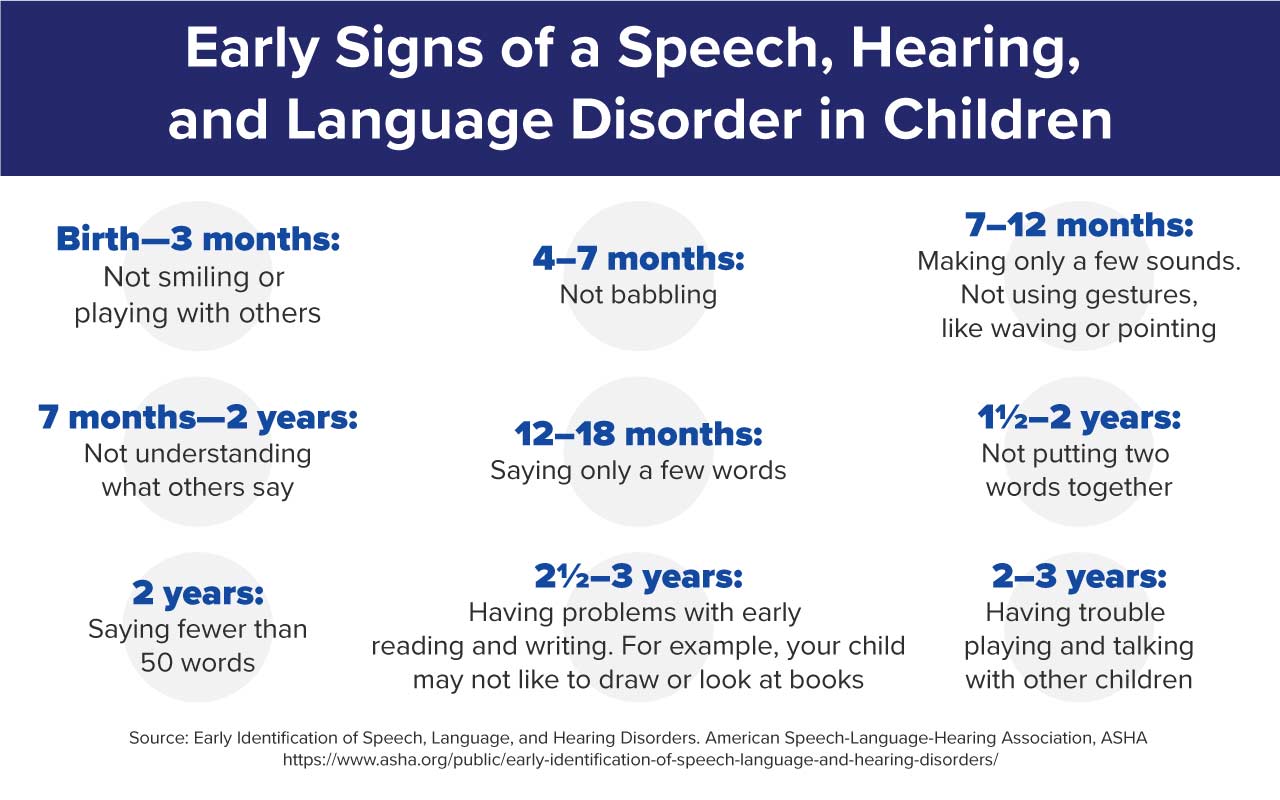How Artificial Intelligence (AI) Can Help Children with Speech, Hearing, and Language Disorders: 40 Free Resources

In the United States, 8 percent of children have speech disorders, particularly between 3-17 years old, and 4 percent have significant language disorders, totaling around $186 billion in annual treatment costs, according to the National Institute on Deafness and Other Communication Disorders.
Children with these kinds of communication disorders suffer from a variety of difficulties that interfere with their ability to communicate. Communication problems can cause significant barriers to children, preventing or discouraging them from taking part in family, community, and school activities. These barriers can lead to higher levels of unemployment and lower incomes later in life, according to the Agency for Healthcare Research and Quality (US).
Many children with speech, hearing and language disabilities have limited options for communicating effectively and accessing speech-activated technologies. But fast-evolving artificial intelligence (AI) research is paving the way for the development of new tools to help overcome these communication challenges, according to Microsoft.
This article is designed to help parents, caregivers, teachers, and child healthcare professionals access these AI-related resources, including accessibility tools, games, screening tools, and more to improve communication with children with speech, hearing, and language disorders.
Resources in this article include:
- Speech and language assessment resources for children
- Apps to help children with communication challenges, stuttering, or autism
- How to use accessibility features and voice-to-speech on a smart device
- Free teacher resources for teaching learners with communication needs
- Free resources for parents and caregivers to teach children with communication needs
First, to help you determine if your child is having communication difficulties, here are the signs of a speech, hearing, and language disorder in children, according to the American Speech-Language-Hearing Association.
 Treatment for Speech, Hearing, and Language Disorders in the Age of AI
Treatment for Speech, Hearing, and Language Disorders in the Age of AI
Early intervention can play a vital role in the academic and social success of children with speech and language disorders later in life, according to the Massachusetts Institute of Technology. Despite the importance of screening children at an early age for communication disorders, more than half of children with such disorders receive inadequate treatment or none at all, according to Dr. Beena Ahmed, an expert on AI speech therapy.
Children with speech and hearing disorders may benefit from early diagnosis and treatment by using artificial intelligence. Open Data Science explains that AI diagnostics are more accurate and timely than traditional methods while generally being less time-consuming. They further explain that AI could analyze millions of patients simultaneously, providing a significant advantage for families who have traditionally had to wait years for a diagnosis.
Free Resources for Children With Speech, Hearing, and Language Disorders
The availability of technology and communication options for children with speech, hearing, and language problems is limited. However, the development of new tools to overcome these communication challenges is being made possible by rapid developments in AI.
These resources, including those related to AI, are aimed at parents, caregivers, teachers, health professionals, and those who work in the field of speech, hearing, and language disorders.
Free Speech and Language Assessment Resources for Children
An assessment of a child’s speech and language can be used to evaluate and diagnose problems with communication, comprehension, and writing. The resources below are designed to help you get started.
- How to Know if Your Child Needs a Speech Evaluation: This article by Cleveland Clinic shared advice on determining if your child needs a speech evaluation, plus three steps to take if you suspect a problem.
- 6 Signs Your Child Might Need Pediatric Speech Therapy: This resource shares some things to watch out for that could indicate your child is having trouble with speech and/or language acquisition.
- Tips for Speech Therapy at Home for Children with Autism: The following article offers a set of tips for speech therapy at home for children with autism.
- 10 Speech Exercises to do at Home While Quarantined: In this article from Otsimo, parents and caregivers are provided with ten speech exercises that they can do at home with their children while in quarantine.
- Language Development Tips From Speech-Language Pathologist (Ages 0-5): This article by Possibilities Clinic shares a series of tips from speech-language pathologists.
- Apple “Saylists” For Young People With Speech-Sound Disorders: Apple now offers “Saylists,” which are special playlists available on Apple Music that are focused on helping young people with speech-sound disorders.
- Communication Success Tips for Children ages 12-36 months: This free book offers communications success tips for children ages 12-36 months.
- Speech-Language Self-Evaluation: This resource from Peak Potential Therapy offers a series of speech-language self-evaluations for ages 0-5.
- Communication Checklists for Children: This free downloadable book offers age- and grade-based speech and language checklists from birth through grade 12 for parents and more.
- Word & Sentence Level Articulation Screener: This free downloadable offers a two-page quick print articulation screener. It screens 52 sounds at the word and sentence level!
- Preschool Articulation and Phonology Screening Kit: This free preschool articulation and phonology screening kit is designed for children ages 2-5.
- Articulation Progress Monitoring Tool: This resource contains stimulus items to monitor learner progress with the /dg/ sound in initial, medial, and final positions of words, phrases, and sentences.
- Hearing Accessibility Features on iPhone: This resource can help you understand the features Apple builds into iPhone, iPad, and iPod to support people who are deaf, have limited hearing, or have unique hearing needs.
Apps to Help Children with Communication Challenges, Stuttering, or Autism
Augmentative and alternative communication (AAC) applications can be extremely useful for children who cannot communicate verbally with those around them. By using these apps, the user can express themselves in ways that they may not have been able to do otherwise.
- Card Talk: Card Talk supports communication with cards for children who have difficulties in verbal communication. Children can indicate their emotion/intention, and learn vocabulary and grammar at the same time.
- Tobii Dynavox Compass Connect: This app provides a research-based communication solution for individuals of all ages and abilities who cannot use their natural voice to communicate.
- Autism Non-Verbal Therapy Game: Designed for ages three and up, this app helps children improve spatial cognition, visual perception skills, fine motor skills, hand-eye coordination, and executive functions such as planning and organizing.
- Leeloo AAC: Leeloo is an app that helps non-verbal kids communicate with their parents, teachers, and friends. The app is developed with both AAC and PECS (Picture Exchange Communication System) principles.
- Avaz App | Speak Using Pictures and Words: Avaz AAC is an augmentative and alternative communication app that empowers children and adults having speech-related disabilities with a voice of their own.
- Huni – AI-Powered Speech Therapy App: Huni is made for children with delayed speech. Additionally, children with developmental disorders (apraxia and stuttering) can use Huni to improve communication.
- Speech Blubs: Language Therapy: Speech Blubs is a voice-controlled speech therapy app designed to help your child learn new sounds and words, and to practice speaking in a stimulating, educational environment.
- Stamurai – Stuttering/Stammering Speech Therapy: Stamurai is a speech therapy app built to help people who stutter/stammer learn and practice speech therapy.
- Speech Sounds Visualized on the App Store: Speech Sounds Visualized is an interactive teaching tool for Speech and Language Pathologists and educators that is designed to improve pronunciation and articulation.
- Otsimo | Speech Therapy SLP: Speech Therapy SLP is a speech therapy app that uses voice and speech recognition technology and machine learning; it understands exactly what users are trying to say.
- Talking Pierre the Parrot: This virtual parrot repeats everything your child says in a funny voice. Even though it’s not an app dedicated to speech therapy, it’s a great way to motivate children to speak clearly.
- Language Therapy for Kids–MITA: Mental Imagery Therapy for Autism (MITA) is a unique, early intervention application for children with language delay and autism.
- Endless Reader | Sight Words for Kids: Endless Reader is an animated educational app for teaching sight words to children six years of age and younger.
How to Use Accessibility Features and Voice-To-Speech On a Smart Device
Today’s smart devices offer a wide range of accessibility features designed to help those with communication disorders. Below are a number of guides to get you started with these features.
- How to Use Dictation (Voice-To-Speech) on your iPhone or iPad: This guide by Apple shares a step-by-step walkthrough on how to enable dictation on your iPhone or iPad device.
- How to Set up Speech-to-Text on Android: This article from LifeWire explains how to setup speech to text on an Android device.
- Android Accessibility Overview: This guide from Google explains how to enable accessibility settings on an Android device, including real-time text during calls.
- iPhone Accessibility/Hearing Overview: This Apple accessibility page provides a detailed overview of iPhone Accessibility with regard to hearing impairment.
Free Teacher Resources for Teaching Learners with Communication Needs
While learners with communication disorders may face added challenges in the class, you as their teacher can help them succeed. The resources below are designed to help you get started.
- Talking Rules Poster – Supporting Students with Communication Disorders: This free downloadable poster is designed to help establish a safe, supportive communication environment that is empowering for all learners.
- Age and Grade-Based Speech and Language Checklists: This resource contains age and grade-based Speech and language checklists from birth through grade 12 for use by teachers and more.
- Supporting AAC in the Classroom: A Teacher Handout: This handout can be shared with all classroom teachers, specialists, and paraprofessionals working with your learner to support their knowledge and understanding of AAC.
- AAC Resources for Core Vocabulary Teaching: This AAC page offers downloadable resources for core vocabulary teaching.
- Speech Sound Prompts Worksheets & Teaching Resources: These free speech and sound prompts can be used to help assist learners with communication disorders.
Free Resources for Parents and Caregivers to Teach Children with Communication Needs
As a parent or caregiver, there are many ways you can help your child if they are facing communication challenges. We’ve compiled a list of resources that can help you get started.
- 5 Ways to Promote Speech Using Only Your Child’s Backpack: This free resource provides five strategies to help your child develop their speech using only their backpack.
- Speech and Language Handouts for Parents: This free downloadable contains a collection of information for parents to utilize when working with their children at home on a variety of speech and language skills.
- Speech Therapy Guide for Teachers and Parents: This guide by Tween Speech Therapy offers tips for teachers and parents.
- A Parent’s Guide to Speech Challenges – eBook: This free eBook can help parents better know what steps to take if they suspect their child has an issue with speech.
- AAC and You – Handout for Parents and Caregivers: This printable handout is designed to help parents and caregivers with basic AAC introductions while dispelling myths.
The inclusion of these resources is for educational purposes only and does not constitute an endorsement by Columbia Engineering Boot Camps. Furthermore, the screening and assessment tools are not intended to act as or replace medical advice from your child’s primary care physician and should not be used as such.

 Live Chat
Live Chat